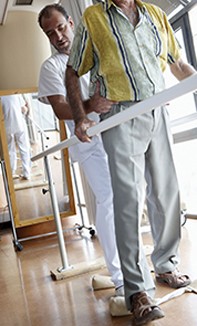Peer Reviewed
Feature Article Cardiovascular medicine
Stroke rehabilitation in the short and long term
Abstract
Stroke rehabilitation delivered by specialist multidisciplinary teams should be available early and delivered intensively to improve outcomes in suitable patients. GPs may be confronted with ongoing problems in patients such as increasing limb spasticity and the effects of cognitive and emotional sequelae after stroke.
Key Points
- Stroke affects about 48,000 Australians each year, with 50% of patients being over the age of 75 years and 45% being referred for rehabilitation.
- Early and intensive rehabilitation in specialist stroke rehabilitation units with multidisciplinary therapy teams has been shown to improve functional outcome.
- Poststroke spasticity should be treated aggressively to reduce the likelihood of joint contractures, pain and loss of mobility in the arms or legs.
- The GP will have an ongoing role in risk factor modification and in managing long-term problems. Assistance can be sought in the longer term from stroke support agencies or the rehabilitation team.
Purchase the PDF version of this article
Already a subscriber? Login here.

